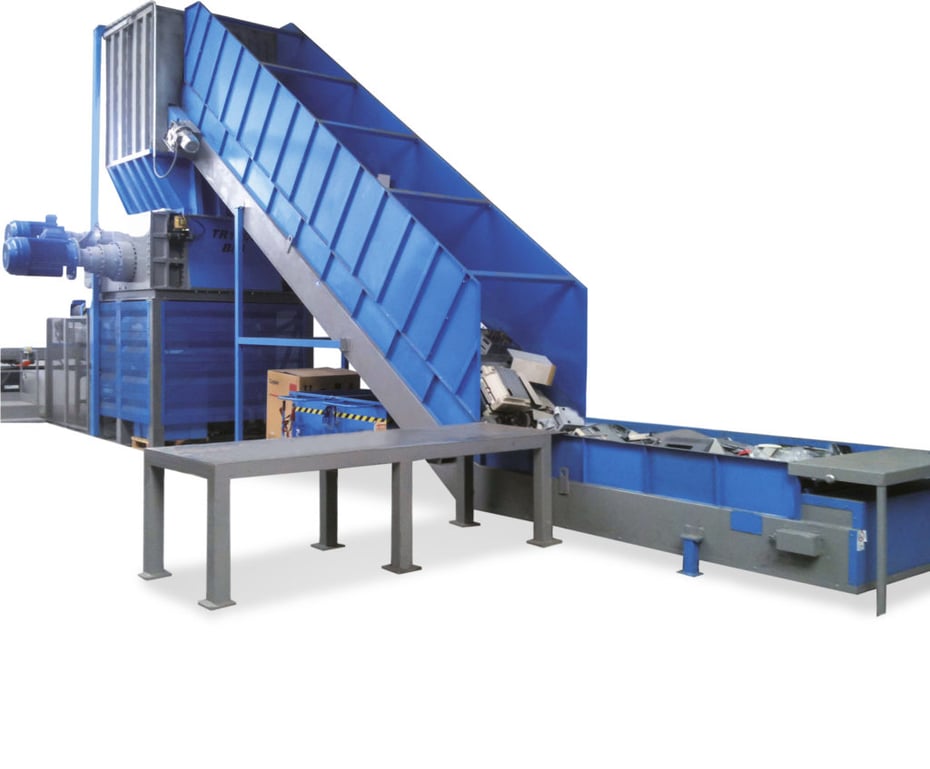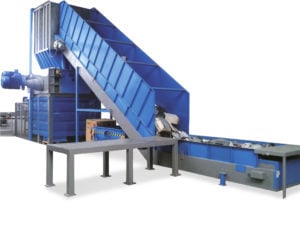Waste Electrical and Electronic Equipment (WEEE) requires special treatment, aimed at minimizing the risk of environmental contamination and protecting everyone’s health, as well as allowing the recovery of a large amount of raw materials present inside them which, once differentiated, can be usefully reused. For this reason they can only be treated in plants authorized for their recovery and recycling, in compliance with Italian and European regulations.
But how does a WEEE treatment plant work? Let’s see it together.
The activities of the WEEE treatment plants
The WEEE recycling process varies according to the characteristics of the specific type of electrical or electronic waste that has to be treated.
Within the factories, many activities are carried out, involving a series of machinery that can be used in different configurations, according to the different processing needs. The machines usually operate in combination with each other, coordinated by software that guarantees the correct execution of the various work phases.
The first step to which WEEE is subjected, once arrived at the treatment plant, is their storage in special protected environments. In this way the waste can be made safe before proceeding with the subsequent processing steps, and there is no risk of dispersion into the environment of any harmful substances contained within them. At this stage, WEEE is already grouped by category, so that similar types of waste are stored together, pending their treatment.
The first phase of the actual treatment of WEEE forsees that all waste is secured and then dismantled. Securing is necessary to eliminate a series of dangerous substances (mercury, oils, coolants …) which could constitute a danger to the environment and human health, and which could also damage the treatment plants with the their wearing or corrosive action. This step is normally carried out by hand and requires an operator to disassemble and remove all potentially dangerous components, collecting the various substances in special containers which will then be disposed of separately at a later time. In this phase, some of the precious components present in the waste can also be recovered, disassembling them by hand, and a first differentiation of particular raw materials (for example, high quality plastics) can be carried out, which can be separated manually.
Once the waste has been secured and summarily disassembled, the material is shredded, which is loaded onto conveyor belts that send it to the double-shaft or four-shaft shredder. Depending on the type of waste, the machine can be used at different powers, and several successive shredding phases can also be provided. The final purpose is in any case to significantly reduce the size of the waste, which normally ends the shredding phase transformed into fragments of a few centimeters.
The shredded material is then selected by passing through different machines: in this phase the separation of ferrous and non-ferrous metals takes place, which once sorted are sent to the plants that process them as secondary raw materials. All the dust generated during this process are sucked up, to prevent them from damaging the quality of the selected material and to prevent any type of environmental contamination.
The recycling of WEEE: which materials can be recovered
The complex mechanism for the recovery of WEEE and the presence of special recycling plants is aimed at recovering the largest possible quantity of raw materials, as required by European and Italian regulations. Treating WEEE in dedicated recycling plants allows you to recover:
-
Metals: metals are the component of WEEE that can be recycled more successfully and with the greatest return in economic terms, since the recycling procedures are relatively simple and allow the recovery of large quantities of material. The most common metals contained in WEEE are:
- Iron, coming mainly from the refrigerant circuits and from the casings of WEEE of type R1 and R2 (refrigeration equipment and large whites)
- Alluminium, present in all different types of WEEE and in particular in refrigerators
- Copper, coming from electrical cables and cooling circuits
- Gold, silver, platinum and other precious metals, present in small quantities in the electronic components of R3 and R4 WEEE (TVs, monitors and small household appliances). If we think that a mobile phone contains more than 250 mg of gold and a personal computer more than 6 grams of gold and almost one gram of silver, it is evident that the recovery of these materials is extremely advantageous at an economic level, given the large amount of electronic devices that are disposed of daily.
- Glass: glass comes mainly from type R3 WEEE, and in particular from picture tubes of televisions and monitors. With the gradual replacement of cathode ray tube screens with plasma or LCD screens, the amount of glass present in WEEE is decreasing, but given that this material can be 100% recovered it remains an important resource.
- Plastic: in almost all WEEE there are different types of plastics, such as Polystyrene (PS), Polyethylene (PE), Polypropylene (PP) or Polyvinyl chloride (PVC). Once recovered, they can be sent to plastic recycling plants, or transferred to waste-to-energy plants for energy production.
- Mercury: significant amounts of mercury are contained within medical devices or old generation switches. Given the dangerousness of this substance, its separation must be done manually before the waste shredding phase.
- Lubricating oils: these oils are present in the refrigeration circuits of refrigerators, freezers and air conditioners, and each of these appliances can contain between 200 and 300 grams. These substances must be extracted directly from the compressors, reclaimed and can finally be recovered as secondary raw materials.
If you want to learn more about the legislation regarding the WEEE disposal and learn al the details relevant to the present rules, download our guide!



